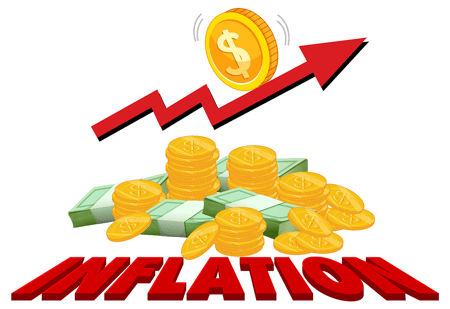Every quarter, Advantexe’s business acumen modeling team meets to discuss the core interest and inflation rate in our business acumen simulations.
“I guess we better make the adjustment and raise them again,” said our top modeler very matter-of- factly. So, beginning this week, the core interest rate in our core (non-customized) business simulations will go to 5.25% and the core inflation rate will go to 3.5%. As our participants run their simulated companies, that means foundational Cost of Goods Sold (COGS), raw materials, and labor will continue to rise.
factly. So, beginning this week, the core interest rate in our core (non-customized) business simulations will go to 5.25% and the core inflation rate will go to 3.5%. As our participants run their simulated companies, that means foundational Cost of Goods Sold (COGS), raw materials, and labor will continue to rise.
The goal of our business acumen simulations is to help our participants better understand business concepts so they can explore the simulation and bring their lessons back to their real-world decision-making.
Why Does Inflation Matter for Business Decision Makers?
As we start the second quarter of 2024, the pesky increasing inflation rate matters because too many decision-makers are worried that eventually, it is going to decrease demand, slow down the economy, and could cause a recession.
I will review some of the foundational data in this blog post that lead to my conclusion that although inflation is a nuisance, it’s not going to cause a significant recession in 2024.
The current United States inflation rate is 3.5% for the 12-month period leading up to March 2024. The rate of inflation was up 0.4% in March from the previous month, according to the latest release from the Bureau of Labor Statistics (BLS). (If you want an interesting read and the chance to dig into the fascinating details, click here for the full report). The BLS notes that the indexes for gasoline and shelter contributed over half that monthly increase, while medical care and vehicle insurance also saw significant increases.
As a reminder, inflation is the rate at which the price of goods and services increases. As a result of inflation, the purchasing power (value) of money decreases over time. Inflation affects the prices of everything around us.
To put things into even more perspective, a 3.5% inflation rate may not seem like a lot, but when you do the math over the last few years, consumer price inflation has risen 19.6% between January 2020 and January 2024, particularly driven by high housing costs.
What is Causing the Inflation to Keep Going?
Inflation can be caused by several factors, some controllable, some not. The recent surge in inflation has been driven by supply chain issues, pent-up consumer demand, the wars in Eastern Europe and the Middle East, and the post-pandemic stabilization of the new ways of working and living.
The most common metric of measuring inflation is the Consumer Price Index (CPI) which is what is published by the BLS. The bureau measures CPI by monitoring the average change in prices paid for a variety of goods and services, classified by eight main groups: food, housing, apparel, medical care, recreation, transportation, education and communication, and other goods and services.
The impact of inflation is felt throughout an economy. As prices rise, what a consumer can purchase today will lessen over time. Being able to combat, or at least keep up with, inflation and sustain the purchasing power of your budget can be critical for long-term business success,
On the other hand, consumers care about inflation because it affects costs and their standard of living. Businesses carefully watch the price of raw materials that go into their products, as well as what wages they need to pay their employees. Inflation affects taxes, government spending and programs, the level of interest rates, and more.
Now, like most things in business, there is a “contrarian” or opposite impact. It is important to note that there is actually a way that inflation is good for business! A low, steady, or predictable level of inflation is considered positive for an economy. It signals growth and healthy demand for goods and services.
Where Does it Go from Here?
As businesses generate more goods and services to keep up with demand, they need to hire more workers, which generally leads to higher employment and wage growth. Those workers then purchase things they need and want, and the cycle and growth continues.
However, when inflation gets too high or too low, it becomes dangerous because it’s hard to keep supply and demand, along with economic growth, in check.
At the beginning of April 2024, the bottom line is this:
- Consumer spending is extremely healthy
- Anyone who wants a job can get one and has many choices
- Any business with a good idea and some collateral to back it has access to almost unlimited capital
- The housing market is cooling off but that’s more a function of low inventory than it is of interest rates
- We’ve been through a pandemic and the world faces aggressive geopolitical battles every day
- There is a major election in the US in November
In our view, inflation will continue to rise for the rest of the year and although many companies have been worried about an impending slowdown and potential recession, it’s not coming. It’s time to stop being conservative and start feeling comfortable with investment strategies into your strategy so you are poised for 2025 and beyond.




